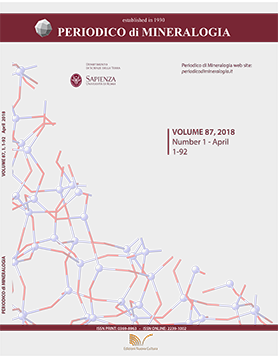Exploring Syenites from Ring Complexes in the Eastern Desert (Egypt) as Ceramic Raw Materials
DOI:
https://doi.org/10.2451/2018PM749Keywords:
beneficiation, ceramic flux, feldspar, nepheline syenite, ring complexAbstract
The aim of this study is to assess the potential as ceramic flux of some feldspar sources in the Egyptian Eastern Desert, particularly syenites from Abu Khruq, which is the most promising ring complex, taking into account various issues, including the occurrence of nepheline syenites. This late Cretaceous ring complex shows zones of alkaline rocks arranged concentrically with quartz-syenite at the border and an inner zone of nepheline syenite. Both rock types are made up essentially of alkali feldspar with minor amounts of alkali pyroxene, amphibole and biotite, but the former contains interstitial quartz and the latter nepheline. The coexistence of silica-saturated and silica-undersaturated rocks is likely the result of crustal contamination. Geochemical data indicate that alumina (12-18%) and alkali (8-13%) contents are lower than nepheline syenites used in the ceramic manufacture and the Fe2O3 content is high (4.1-6.4%). Thus, the investigated syenites must be beneficiated to be usable in the ceramic industry. Lab-scale mineralurgical treatments (comminution and magnetic separation) were carried out and the beneficiated samples were characterized from the chemical and technological viewpoints. Abu Khruq syenites resulted to be suitable for the production of ceramic tiles.


